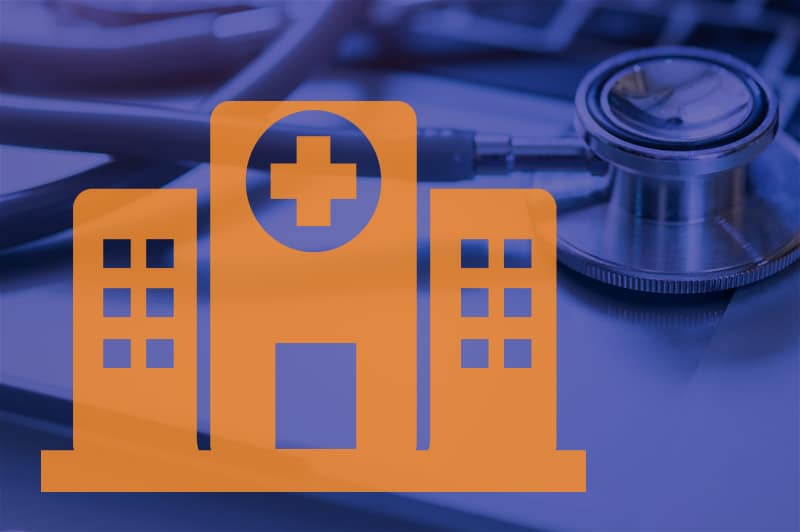Improving the Patient Experience with Technology
How can technology improve the patient experience in healthcare?
October 26, 2021
The healthcare industry is currently undergoing a technology revolution. Big data and artificial intelligence tools are being used to monitor public health, aid in diagnostics, and advance medical research. At the same time, the process of obtaining medical care is becoming increasingly digitized, with virtual concierge systems, apps, and telemedicine.
While technology is behind many advances in the medical field, its rapid adoption is a cause of concern for some providers and patients. Many people worry that an over-dependence on these technology tools can lead to biases in medical care, such as focusing on data points that don’t take the whole picture into account. Similarly, there are worries about equal access for those who are not tech-savvy or who don’t have good internet, as well as valid concerns regarding data privacy and security. There is certainly something to be said for the human element in healthcare. With that in mind, how can technology be used more strategically to build a patient-centered experience? In this blog, we will explore two areas of medical technology and suggest ways they could become more patient-centered.
Mobile Apps
Over the past decade, healthcare apps and online portals have become an essential part of the healthcare experience. Apps offer a ton of different functionalities including delivering test results, providing symptom checkers, and connecting people with healthcare providers. You can now make appointments, refill prescriptions, and even speak with providers online. Healthcare apps have already made major strides for mental health with apps like Better Help that connect patients to therapists nationwide. There is no denying that applications are a useful part of our everyday lives, and they’re picking up in popularity, but how can healthcare applications be more patient-centered?
A 2015 study showed that healthcare application usage was not particularly high overall, but for those that used apps, the primary focus was on exercise, brainteasers, and diet apps. (1) Based on the results, the survey researchers concluded that most people preferred apps with broad functionality. Furthermore, patients were seeking out these applications on their own – not at the recommendation of a trusted healthcare provider. If you’d like to explore apps from a different angle, we’ve discussed some of the newest technology in a previous article about Telemedicine.
Making Apps More Patient Centered
- Get Providers Involved – This is a more complex ask, but getting providers involved in selecting and sharing healthcare apps can make a big difference in patient trust and in guiding the development of apps
- Develop features that Promote Better Exchanges Between Providers and Patients – Symptom trackers that can track a patient’s health over time (tracking self-reported migraines, food sensitives, or pain flare-ups) could facilitate better conversations with providers. Imagine an app where a healthcare provider could prescribe a basic health regime directly through an app, during an in-person visit and the patient could track it on their phone, ask questions, and get feedback. This may improve accountability and follow-through by creating a better connection between providers and patients.
- Broaden Functionality – Although many providers and hospital systems have developed apps, many are too narrow in functionality, meaning users will download them and forget about them. By adding in lifestyle features, or features like long-term symptom tracking, these apps could help build a clearer picture of patient health
- Connect to Tech patients already Use – Apple watches already enable heart rate alerts that can detect low heart rates and irregular rhythms. If medical applications paired with current wearable tech and allowed patients to share some of this biometric data, it could help providers get a clearer picture of overall health. We are already seeing this in action with wearable, continuous glucose monitoring devices that can alert diabetic patients to dangerous drops or spikes in insulin without constant finger pricks.
Medical Records and Data
The fact that there are entire careers devoted to organizing medical records is telling. Medical paperwork and patient records are the lifeblood of the healthcare industry. Accurate and accessible records are essential to building a comprehensive picture of a person’s health. Having accurate records is key to avoiding misdiagnosis or dangerous drug interactions. Today, many providers have made the shift to digital medical records, allowing providers to access up-to-date information from mobile healthcare portals. This is a great way to put patients first, but there are some important factors to consider when designing or onboarding digital medical records.
Making Medical Data More Patient Centered
- Provide Easy Records Access to Patients – Patients want to have control over their medical documentation. A secure document management system can allow patients easy access to important records, test results, previous visit notes, and more. Many medical practices have already implemented an online patient portal, and this is a step in the right direction.
- Don’t Discount Good UI – A great user interface (UI) can drastically improve patient engagement, and helpless tech-savvy users reap the benefits of digital records. A clunky patient portal may do more harm than good. If it’s too frustrating to navigate, patients may just skip booking a visit altogether or ignore important results and messages.
- Use Records to Make Proactive Suggestions – This isn’t something that’s happening in healthcare yet, but as medical data lakes quickly grow into data oceans, machine learning has the potential to read medical records and prescribe proactive health measures. With targeted advice or testing, it may be possible to prevent issues like skin cancer or diabetes. As we gather more and more data, it may be possible to statistically pinpoint at-risk groups, automatically remind patients to schedule visits, and even catch illnesses early based on past test results or wearable tech.
- Switch to Digital Forms – Allowing patients to complete forms online ahead of visits or from their mobile devices in the waiting room can eliminate a lot of unnecessary, intermediary steps. When you offer digital forms, you: reduce miscommunications due to poor handwriting, save valuable resources, and allow providers immediate access to the data without needing to scan or manually input the information. Similarly, this can speed up visits by allowing patients to complete paperwork in advance without patients needing to print, fill it out, and remember to bring it with them.
- Put Security First – Protecting private medical data is a necessity and not just because it’s an industry regulation. Ensuring communications and records are private and secure builds essential trust between providers and patients.
Technology can make a positive impact for patients and healthcare providers as long as it’s deployed thoughtfully. Indeed by applying bid data and next-gen hardware, healthcare systems can reduce errors for prescriptions and diagnostics, reduce costs, and streamline the process of obtaining care. There is so much potential in the field of medical technology. We are often focused on big innovations like cures for diseases or new medications, but many of the smaller more accessible advances can make just as much of an impact. The key is keeping the focus on patients, not just technology for technology’s sake. Exploring medical data with artificial intelligence and simply making healthcare more accessible for the underserved can save just as many lives as a new wonder drug.
How can DOMA help Medical Providers?
DOMA is ready to help with your medical records challenges. We believe that accessible data puts patients first, and our DX portal can make collecting and exploring healthcare records easy. We can also assist with helping your healthcare organization digitize legacy records and documents or transition to digital forms.
About DOMA- Powered by Tech, Driven by People
DOMA Technologies (DOMA) is a software development and digital transformation company whose mission is to change customer lives by lightening their workload through faster and more targeted access to their data. Since 2000, our team of 200+ experts has helped businesses navigate all aspects of the digital world. We are a dedicated strategic partner for the federal government and private sector clients at every stage of their unique digital transformation journey.

Author:
Danielle Wethington
Director of Communications
References:
Healthcare Services
Learn more about DOMA’s Healthcare Services.
Recent News

DX Engage Achieves FedRAMP Ready Status

Data-Driven Sustainability for a Healthier Future

Humanizing Healthcare

